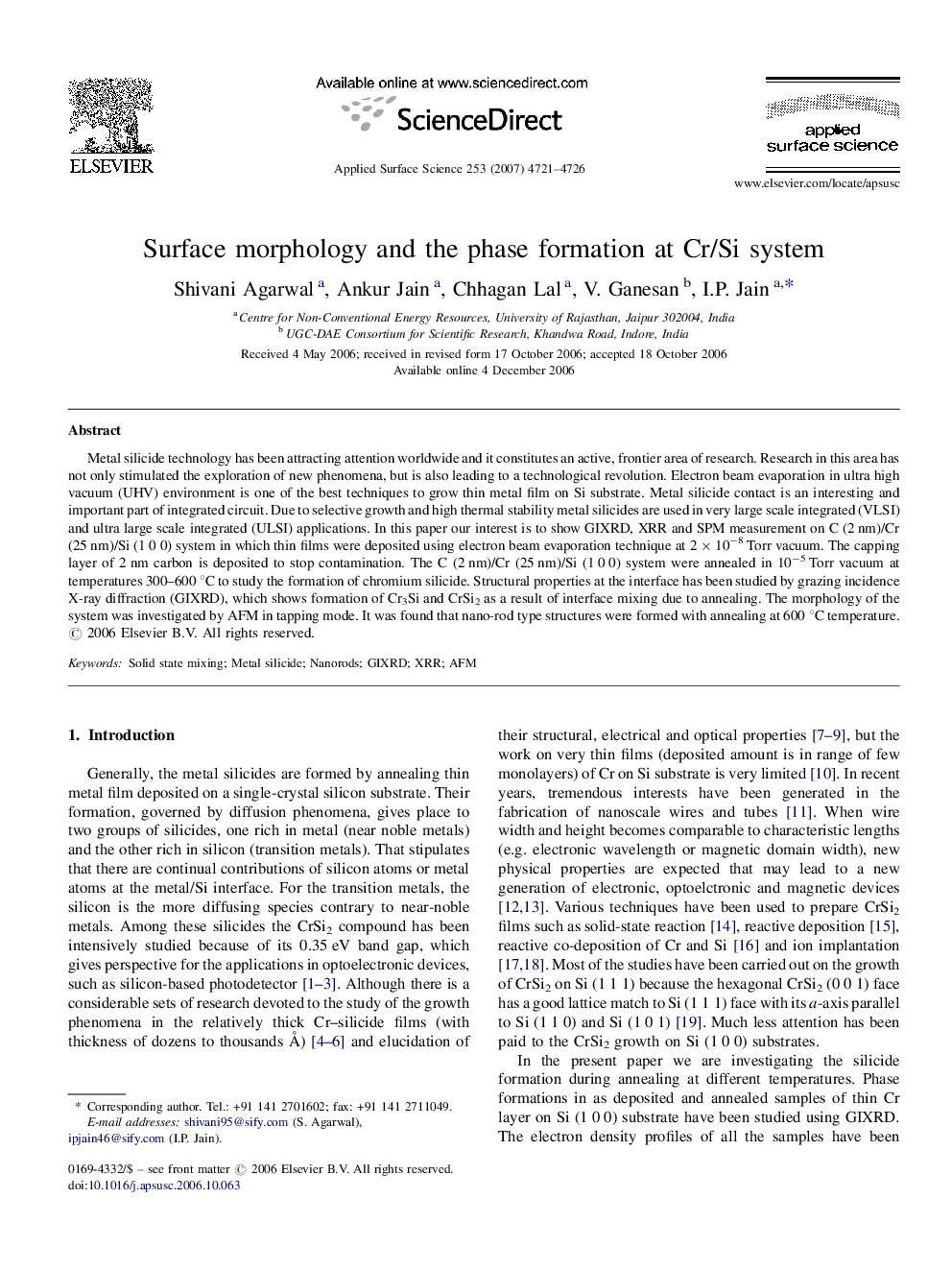| Article ID | Journal | Published Year | Pages | File Type |
|---|---|---|---|---|
| 5366038 | Applied Surface Science | 2007 | 6 Pages |
Metal silicide technology has been attracting attention worldwide and it constitutes an active, frontier area of research. Research in this area has not only stimulated the exploration of new phenomena, but is also leading to a technological revolution. Electron beam evaporation in ultra high vacuum (UHV) environment is one of the best techniques to grow thin metal film on Si substrate. Metal silicide contact is an interesting and important part of integrated circuit. Due to selective growth and high thermal stability metal silicides are used in very large scale integrated (VLSI) and ultra large scale integrated (ULSI) applications. In this paper our interest is to show GIXRD, XRR and SPM measurement on C (2 nm)/Cr (25 nm)/Si (1 0 0) system in which thin films were deposited using electron beam evaporation technique at 2 Ã 10â8 Torr vacuum. The capping layer of 2 nm carbon is deposited to stop contamination. The C (2 nm)/Cr (25 nm)/Si (1 0 0) system were annealed in 10â5 Torr vacuum at temperatures 300-600 °C to study the formation of chromium silicide. Structural properties at the interface has been studied by grazing incidence X-ray diffraction (GIXRD), which shows formation of Cr3Si and CrSi2 as a result of interface mixing due to annealing. The morphology of the system was investigated by AFM in tapping mode. It was found that nano-rod type structures were formed with annealing at 600 °C temperature.
